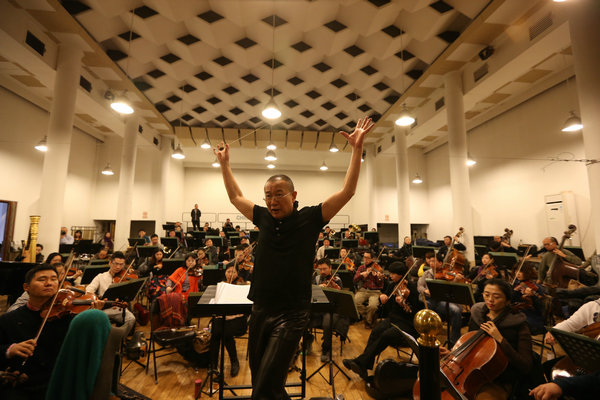 |
|
Tan Dun continues his music experiment by combining classical music with rock 'n' roll in a concert in Beijing.[Photo by Jiang Dong/ China Daily] |
"I don't like the word 'crossover' or 'fusion'. It's not that easy to re-create a pop song for an orchestra," Tan says.
They tried to capture the character of individual songs and let the orchestra add value, he says. In many songs, the attempt was to highlight the rhythm.
"I think rhythm is the key to future music. Chinese music has very good melody, so sometimes we forget we are good at rhythm, too. Peking Opera is a great example of using rhythm," Tan says.
The orchestra also played Tan's three works-Passacaglia: Secret of Wind and Birds, The Triple Resurrection and Long Li Ge Long: A Symphonic Poem Audience Chant.
The works are all Tan's experiments with new sounds.
In Passacaglia, for instance, all the orchestra members held up their cellphones and played the recordings of birds chirping to six traditional Chinese instruments, including sheng (mouth-blown reed instrument made of vertical pipes), pipa (four-stringed plucked instrument), suona (double-reeded horn), erhu (two-stringed bowed instrument), dizi (Chinese flute) and guzheng (Chinese plucked zither).
The Triple Resurrection was created to pay homage to Richard Wagner's Ring Cycle. It is the fourth part of Tan's Martial Arts Cycle, a series of concertos based on his award-winning scores for movies such as Crouching Tiger, Hidden Dragon (cello soloist), The Banquet (piano) and Hero (violin).
Saturday's concert ended with Long Li Ge Long: A Symphonic Poem Audience Chant.
Members of both rock bands and the singer Song sang amid audiences, in an improvisation-like scenario.